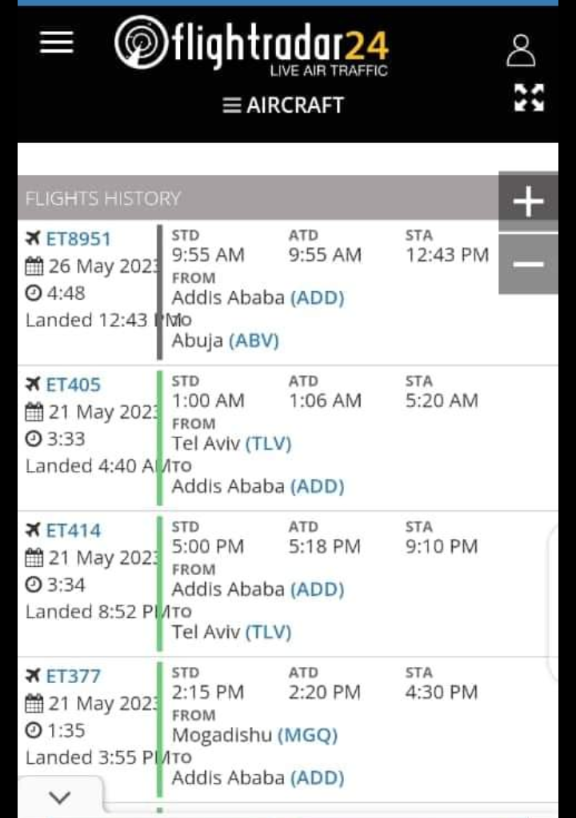After much anticipation from Nigerians, the Federal Government finally ‘unveiled’ Nigeria Air, the country’s national carrier, at the Nnamdi Azikiwe International Airport (NAIA) in Abuja on Friday.
The ground-breaking event has sparked a series of controversies, with Nigerians questioning the motives behind unveiling the airline in the final days of President Muhammadu Buhari’s tenure.
Of greater concern is the decision to float a rebranded 10-year-old aircraft as part of Nigeria Air’s debut. While Minister of Aviation Hadi Sirika, who has been involved in the project for several years, did not explicitly confirm the age of the aircraft, Nigerians have raised this query.
In November 2021, Sirika did mention that Nigeria Air would initially operate with three wet-leased aircraft. A wet lease involves hiring an aircraft that includes both flight crew and, at times, fuel.
The timing of the airline’s launch and the choice of a potentially older aircraft have fueled speculation and raised eyebrows among the public. As the controversies persist, Nigerians seek clarity on these matters from the government.
What Findings Show
After examining the recent flight data on Flight Radar Tracker, it has been confirmed that the aircraft introduced in Abuja is at least a decade old, as disclosed by Kelechi Deca.
Deca explained, “I had asked someone to note down the registration number of the aircraft that arrived in Abuja bearing the name Nigeria Air. However, while waiting, I came across the number in another post, prompting me to conduct a quick search.”
TechEconomy analysis of Flight Radar Tracker as revealed by Deca shows that the aircraft in question is a Boeing 737-860 Max with the registration number ET-APL and mode S Q4005C. Its serial number is 40965/4075, and it has an age of 10 years and 8 months.
Its inaugural flight took place on June 22, 2012, under Ethiopian Airlines. That same aircraft that was celebrated in Abuja later operated under the name Malawi Airlines starting February 16, 2014. It was subsequently returned to Ethiopian Airlines on August 12, 2015.
On May 26, 2023, it appeared with the Nigeria Air livery, although the ownership did not change.
The aircraft’s status is listed as active, with its last activity recorded 4 hours ago. The last known location is Abuja, Nigeria.

The Lifespan of an Aircraft
Given that the aircraft floated by Nigeria Air is approximately 10 years old, it would have an estimated remaining lifespan of around 20 years, based on the average operable life span of 30 years for aircraft.
However, it’s important to note that the specific lifespan of an aircraft depends on various factors, including the type of aircraft, its usage, maintenance, and technological advancements.
For instance, a Boeing 747 typically endures around 35,000 pressurization cycles and flights, which translates to roughly 135,000 to 165,000 flight hours. After approximately 27 years of service, metal fatigue begins to set in, leading to the retirement of most 747s.
Regular inspections, maintenance, and safety checks are standard practices to ensure the airworthiness and operational longevity of aircraft. Ultimately, retirement decisions are influenced by factors such as safety, efficiency, and the economic viability of keeping the aircraft in service.
Who owns Nigeria Air?
The Ethiopian Airlines (ET) consortium, which emerged as the preferred bidder for Nigeria Air, holds a 49 percent stake in the company, according to public disclosure made in 2022.
However, other reliable sources state that the Nigerian government’s ownership is limited to just 5 percent, while three other Nigerian groups collectively own 46 percent of the shares.
During the launch event, the Minister emphasized the partnership between Nigeria Air and the Ethiopian Airlines consortium, highlighting the aim to establish connectivity between the markets of both countries.
It is important to note that the 5 percent ownership by the Nigerian government does not imply that Ethiopian Airlines solely owns the airline.
This situation is comparable to British Airways, which is 100% owned by IAG, an Anglo-Spanish airline consortium. Similarly, the Government of Canada owns around 6.4% of Air Canada, with the majority ownership held by entities like the Vanguard Group, Inc. and U.S. Global Investors, Inc.
Flight Demo
As part of the process to commence full operations, the Nigerian Minister of Aviation, Sirika, announced that a demonstration flight for Nigeria Air would soon take place.
Expressing the significance of this infrastructure in the general aviation sector, Sirika highlighted the airline’s suitability for Nigeria’s dynamic market and geography.
Nigeria Air Limited, a legally recognized entity formed through a partnership between Nigerian and Ethiopian entrepreneurs, has been on a long journey since its inception in 2016. Despite challenges along the way, Sirika expressed optimism for the future of the airline and its positive impact on the country and its people.
Regarding the commencement of flight operations, Sirika explained that the Nigerian Civil Aviation Authority (NCAA) sets specific conditions for establishing an airline. The demonstration flight serves as a crucial step to showcase the airline’s capabilities, with the duration typically ranging from 0-40 hours. Once the NCAA provides its approval, the airline will proceed with its operations
35 Aircraft in 5 Years
Furthermore, the Minister outlined the long-term vision for Nigeria Air, stating that it aims to acquire a fleet of 35 aircraft over the next five years.
However, he emphasized that the process would be gradual, with aircraft being added progressively rather than all at once.
While the government holds only a five percent stake in the airline, it intends to eventually make the remaining shares available to the public for sale.
Sirika also specified that Nigeria Air would initially focus on domestic flights, utilizing Boeing 737 aircraft for their capacity.





